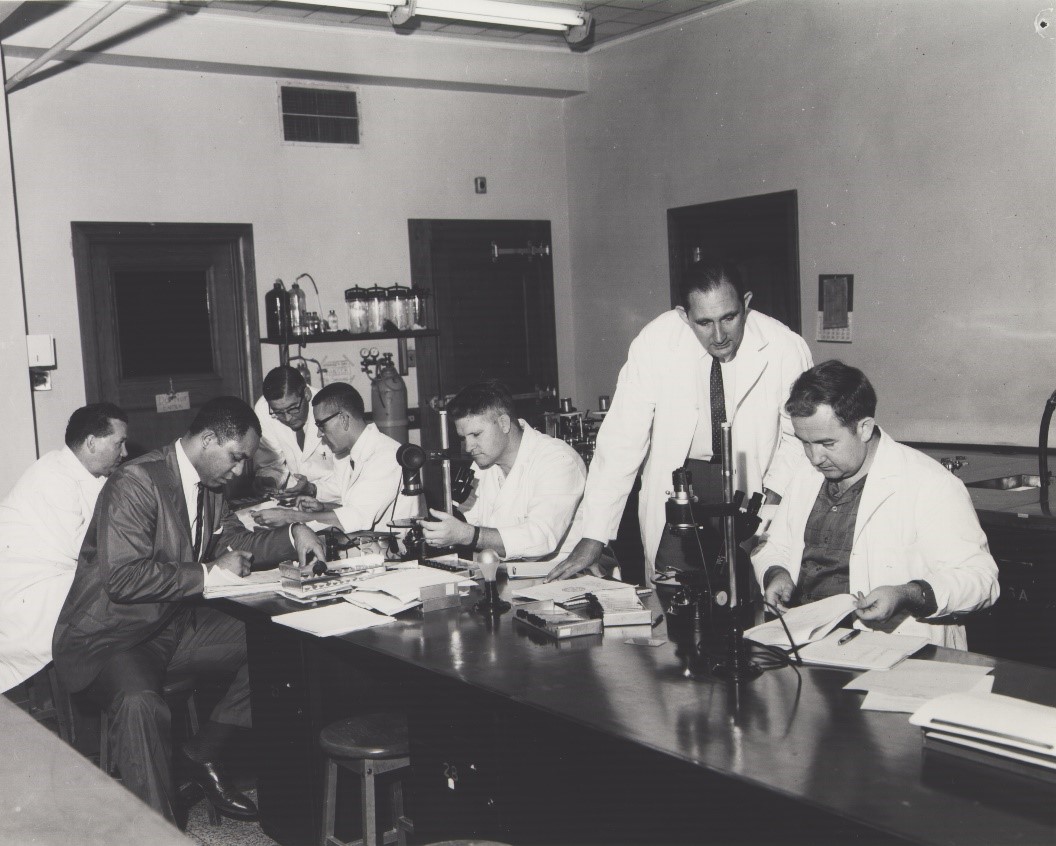About
The University of Saskatchewan (USask) Tissue Culture Core Facility provides the health sciences research and teaching community with a suite of shared incubators and biosafety cabinets for human and mammalian in vitro cell line maintenance and experimentation.
Users of the facility include principle investigators, graduate students, post-doctoral fellows, technical staff, and undergraduate students from USask colleges and departments including (but not limited to):
- College of Medicine
- College of Engineering
- College of Pharmacy and Nutrition
A number of USask collaborators rely on the Tissue Culture Core Facility in order to conduct specialized research. Recent research projects at the facility include:
- Cartilage and bone cell differentiation and regeneration, and cartilage tissue engineering.
- Exploring drug side effects, neuronal function, and cell signaling.
- Examining the potential therapeutic effects of phytochemicals in various cancers, liver and bowel diseases, and nervous system disorders.
- Monitoring cellular uptake and mapping intracellular fate of nanoparticles.
By fostering innovation for in vitro cell culture research and learning in the health sciences, the Tissue Culture Core Facility continually strives to provide collaborative research opportunities and a robust teaching and learning environment.
Mission and Vision
Mission: To provide collaborative research opportunities and a dynamic teaching and learning environment for the University of Saskatchewan health sciences community.
Vision: To inspire in vitro cell culture research and learning innovation that will unleash discovery and provide meaningful impact.

Since 1963, the University of Saskatchewan (USask) has been in a unique position to foster tissue culture studies.
That was the year the head of the university’s Department of Cancer Research, Joseph F. Morgan, and the head of the Department of Anatomy, Sergey Federoff (considered to be the father of tissue culture), combined forces to organize the International Tissue Culture course.
Presented every two years, the course was designed for established scientists and graduate students from various disciplines. From the beginning, it was attended by scientists from around the world.
Faculty members in a variety of disciplines used tissue culture techniques in areas such as human and animal research. This concentration of tissue culture research created a hothouse environment where innovation could blossom.
Today, that legacy of innovation continues at the University of Saskatchewan Tissue Culture Core Facility.Location & Hours of Operation
The Tissue Culture Core Facility is located in B307 of the USask Health Sciences Building and is open Monday to Friday, 8am to 5pm, with limited evening and weekend availability.
Please contact the lab manager in advance to review the mandatory requirements and to check availability of space. Virtual tours are also available upon request.
NOTE: Although the facility is available throughout the year, researchers must accommodate an undergraduate student lab which uses the space for approximately two weeks in Term 1 and—depending on enrollment—also in Term 2.
Equipment, Supplies & Storage
Each of the five workstations in the Tissue Culture Core Facility is equipped with supplies necessary for aseptic technique.
Users must supply their own cell cultures, media, consumables, and personal protective equipment (PPE).
The Tissue Culture Core Facility is equipped with:
- Three 6 ft. and two 4 ft. Class II certified biosafety cabinets
- NOTE: Pipettors are only available at the 6 ft. biosafety cabinets
- Six shared incubators with three shelves each, 5% CO2, and humidity chamber with sterilized deionized water
- Refrigerated tabletop centrifuge with protective caps for infectious material
- Olympus inverted compound microscopes
- Glass hemocytometers with counters
- Vacuum pumps with vacuum flask set
- Dry bead bath and/or water bath
- Upright standard fridge
Additional equipment includes:
- Hands-free handwashing sink
- Flammables storage cabinet
- Spill kits
- First aid kit
- Binder for biosafety permits
- Wall mounted hooks for lab coats
Workstation supplies include:
- Biohazard waste bins
- Sharps containers
- 70% Ethanol spray bottle
- Kimwipes
Common supplies:
- Bleach
- Small biohazardous waste bags
Storage
There is a very limited amount of space for storage, so users should only bring enough supplies to use for the week.
NOTE: There is no cryostorage available in the facility.
Mandatory Training Materials
To maintain the safety of all users and to uphold the integrity of all work conducted within the facility, all users must have completed mandatory online training and additional requirements prior to entering the University of Saskatchewan Tissue Culture Core Facility.
Those wishing to access and make use of the facility should familiarize themselves with the mandatory training materials provided below.
- Before independent access is granted, supervisors must sign the Health Sciences Tissue Culture Core Facility Site-specific Training Record.
- Once access approval is granted, the lab manager will arrange card access to the facility. Access will be cancelled if technique is proven to be inadequate and retraining is required or when users no longer require access to the facility.
For questions related to mandatory training and facility access requirements, please contact the facility lab manager.
Users of the USask Tissue Culture Core Facility must review the material in the following documents and log them in the Tissue Culture Core Facility Site-specific Training Record before being granted access to work in the facility:
Users of the USask Tissue Culture Core Facility must review the material in the following videos and log them in the Tissue Culture Core Facility Site-specific Training Record before being granted access to work in the facility.
NOTE: Employing proper aseptic technique is extremely important to help prevent costly contamination of fellow users’ work. Users must be trained on aseptic technique by their supervisors or a designate and be supervised until they are competent and understand the proper use of all equipment in the room.
Reviewing the following materials is not mandatory prior to receiving access to the Tissue Culture Core Facility; however, these reference materials contain specific guidelines and explanations for research to be successful and conducted properly.
Contact Information

For inquiries about the Tissue Culture Core Facility or to arrange for orientation prior to accessing the room, please contact the facility lab manager.

